After approximately four years of intermittent work, the Super Nintendo Entertainment System/Super Famicom wiki project draws to a close. Even I'm not fully certain of the total number of games for the system - combined, we're looking at somewhere between 1760-1770 games - and there's a lot of checking to do before I'm ready to move on, but I feel fairly secure in saying the Giant Bomb wiki has everything. As far as I'm aware, we're the only gaming wiki that can boast that.
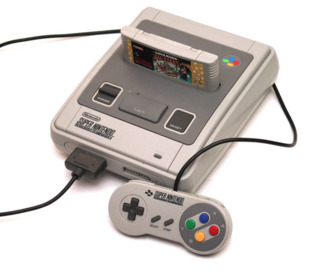
I've spoken about the system's decline in the past few updates of this series. Naturally, the SNES wasn't exactly on top of the heap between the years of 1997 and 2000, which this last update will cover. But the legacy of the SNES remains one of video gaming history's strongest, hence this present mad rush to pre-order a SNES Classic as soon as they come back into stock. I won't be accentuating the negative this time as the release schedule for the SNES eventually dries up to nothing, but I will make a few observations about the way it passed into obsolescence. For one, the grand majority of these games were either released exclusively through the Nintendo Power service, or were introduced that way before seeing a retail release of their own. A service denied the rest of the world for no doubt all sorts of logistical reasons, the Nintendo Power service (again, not to be confused with the magazine) had players purchase a blank flash cart which they could then take to gaming and convenience stores across Japan and install up to around six or seven SFC games on it for a small fee. The nature of this service, and the fact a handful of games could only be purchased this way, makes it slightly tricky for full-set collectors as you might imagine: if you see a NP-only game on eBay or in some Japanese retro gaming store like Super Potato (or whatever new haunts have risen to replace it as the Japanese game collector's El Dorado), it's likely it'll only appear as a blank, unmarked Super Famicom cartridge. You take a lot on faith with a purchase like that.
Nonetheless, the relatively cheap delivery method of the Nintendo Power saved Nintendo themselves and loyal third-party game developers a lot of publishing costs, which led to more SFC releases than you might expect in a period of time where people were preparing for the launch of the Sony PlayStation 2. Nintendo led the final charge with some of their most ambitious SNES games, with some support from a dwindling number of third-party developers, and the following ten games released between 1997-2000 should give you some idea of just how gracefully the SNES managed to bow out.
Before we move onto our final list of SNES/SFC highlights, let's have one quick recap of all the previous "Super 9X" wiki project updates and some lists of all the SNES/SFC games I added to the wiki personally:
- Wiki Project: Super '93
- Wiki Project: Super '94 Q1
- Wiki Project: Super '94 Q2
- Wiki Project: Super '94 Q3
- Wiki Project: Super '94 Q4
- Wiki Project: Super '95 Q1
- Wiki Project: Super '95 Q2
- Wiki Project: Super '95 Q3
- Wiki Project: Super '95 Q4
- Wiki Project: Super '96
- Super Famicom's Super Also-Rans
- The Super Famicom Super Also-Ran Super Sequel
- The Super Famicom Super Also-Ran Super Sequel's Super Sequel
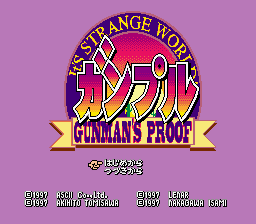 | Gunple: Gunman's Proof: Another game like Marvelous that superficially resembles The Legend of Zelda: A Link to the Past, but has a completely different atmosphere and gameplay focus. With Gunple, the player is still exploring a world with a top-down perspective, but the gameplay is that of an eight-directional shooter game more befitting of the game's Wild West theme. Similarly, dungeons aren't so much filled with puzzles and secondary objects to aid traversal but a linear series of gun battles that actually scores the player on their prowess. If anything, it more resembles the twitch-shooting chaos of The Binding of Isaac, but without the randomized aspect (and any of the poop and Satan stuff, obviously). A 1997 release meant that an English localization would not have been cost effective, but it seems like a game ideal for such a treatment given its theme and relatively straightforward gameplay. |
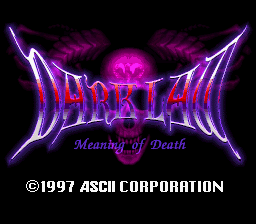 | Dark Law: Meaning of Death: A grim strategy RPG, Dark Law is one of a handful of "pen-and-paper style" Japanese-developed RPGs for the system along with Sword World SFC and Seijuu Maden Beasts & Blades in that it let players create their own party, assigning stats and names before setting out into a mostly open-world with the eventual goal of turning back the forces of darkness. SNES games that afforded this level of freedom in their RPGs were light on the ground, and even fewer were strategy RPGs of the type where players move around a grid and attack with a finite number of "action points" per turn. There's a dense amount of plot and lore to uncover, and a lot of the game hinges on player choice. I'd wager the developers of this game spent such a long time on it that they ended up releasing it in a period where almost everyone had moved on from 16-bit consoles, which is unfortunate. |
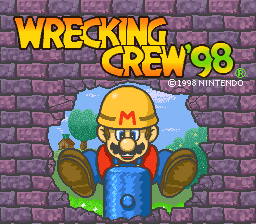 | Wrecking Crew '98: It was a curious decision of Nintendo's to resurrect Wrecking Crew, one of their lesser-celebrated NES first-party games. The original Wrecking Crew was an action-puzzle game of sorts where Mario had to quickly demolish a set of wall panels before being caught by wandering monsters. It had the pace and strategy of a Lode Runner or a BurgerTime, where your attention was split between whichever part of the level needed completing and the dogged enemies on your tail. This reboot goes for a whole new dynamic, with players smashing falling colored panels to create something more reminiscent of a competitive Match-3 puzzle game. Fortunately, this reboot also includes the original game if the new format isn't to your liking. |
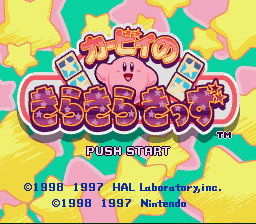 | Kirby no KiraKira Kids: Kirby no KiraKira Kids came too late for the SFC to see a localization, but the Game Boy version did make its way overseas as Kirby's Star Stacker. A competitive puzzle game like Puyo Puyo where the focus isn't so much clearing the screen as quickly as possible but setting up massive chains to knock down. In short, the goal is to destroy stars by stacking them between two icons of the same shape: every time you destroy a sufficiently large amount of stars in one turn, you get consecutive waves of even more stars which continue as long as you still have a means to destroy them (say, by having two identical icons on either side of the playing field). It's a little easier to grasp than it sounds, which should probably come as no surprise for a Kirby game. I should probably also mention Kirby's Dream Land 3, released late in 1997, which went for a far more crayola-fashioned look presumably inspired by Yoshi's Island. Those two franchises have been trading notes in art class ever since. |
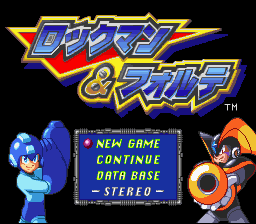 | RockMan & Forte: The last game in Capcom's Mega Man franchise to hit the SNES wasn't another Mega Man X game but a spin-off in the original Mega Man series that is meant to serve as a better introduction to Bass, the antagonistic rival that appeared in Mega Man 7. In this, a new antagonist has stolen robot plans from both Dr. Light and Dr. Wily, and Mega Man and Bass decide to track them down and defeat this new evil. Not so much working together but working independently towards the same goal, the player can control either one with some significant differences between the two. The original Super Famicom Mega Man & Bass was never officially localized - no doubt due to being released so late in the system's lifespan - but would eventually receive a Game Boy Advance port that did see European and North American distribution. |
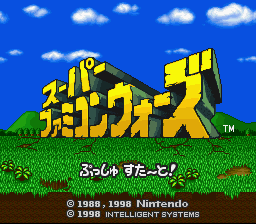 | Super Famicom Wars: We know the series as "Advance Wars" due to its Game Boy Advance releases, which were the first to be localized into English, but the Nintendo Wars franchise has been around a lot longer. A slightly tongue-in-cheek approach to a war strategy game, players take up the mantle of a brightly colored army as they take over production and revenue generating sites across a map, using those funds to generate an army of tanks and soldiers with which to overwhelm their opponents. Super Famicom Wars is very similar to the earliest Advance Wars games, where there was less of a story to worry about and players simply had a set of maps to conquer. |
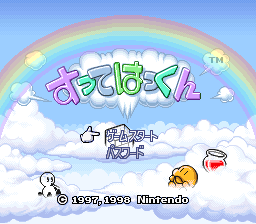 | Sutte Hakkun: There's a lesser appreciated side of Nintendo's first-party output which focuses not so much on the big-budget masterpieces like Super Mario and The Legend of Zelda, but smaller more bite-sized puzzle games like Pushmo and BOXBOY!. Sutte Hakkun, though it was developed in a time before nebulously-defined smaller "downloadable" (or "Indie") tier of game development was commonplace, definitely feels like a spiritual predecessor to those 3DS underdogs. Originally released in parts through the Satellaview broadcast service, it would then be made available through the Nintendo Power service before finally getting a retail release with a cart to call its own. The game's one of those puzzle-platformers that's easy to figure out - you can pick up and distribute objects, and also fill them with paint to change their properties - but becomes far more challenging later on. Filling in shapes with different colors lead to different outcomes too, so there's some trial and error involved when encountering objects or colors for the first time. It feels like a game that's been crying out for a reboot for a while. |
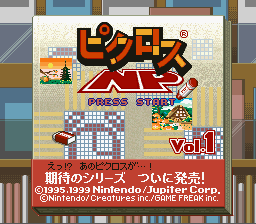 | Picross NP: The Nintendo Power service dabbled in serial content for a while, which the Satellaview was better known for (by necessity, since they could only fit so much data into each satellite "broadcast"). The Picross NP (for "Nintendo Power") series, based around the popular number-based puzzles also known as nonograms, was originally released in eight parts with two month intervals between them. Each new episode contained a new set of generic puzzles, as well as a special set of puzzles that corresponded to a particular recent Nintendo release: Pokemon Red/Green, Yoshi's Story, Kirby, Star Fox 64, Ocarina of Time, Super Mario 64, Wario Land 2 and Donkey Kong Country. In a sense, Nintendo could surreptitiously advertise their upcoming games through these updates, sort of like how they've been doing with the 3DS's free-to-play Puzzle Swap and Nintendo Badge Arcade games. A lot of these Nintendo-specific puzzles would later find their way into Picross DS. |
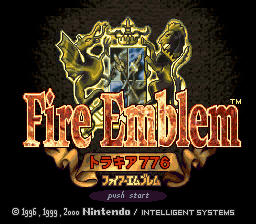 | Fire Emblem: Thracia 776: The last 16-bit Fire Emblem was also the final retail game for the Super Famicom, as well as the last Fire Emblem that the original creator Shouzo Kaga worked on. Like a number of games released at this time, it was first introduced via Nintendo Power and then later made available as a retail release. The game takes place before and during Seisen no Keifu, the fourth game in the series, and features Prince Leif, a character that would eventually join the hero's army in Seisen no Keifu. The game's meant to be a bit more of a throwback, reducing the size of maps and increasing the difficulty to NES levels. It's relatively challenging to find these days, due to the rarity of the cart version and the complications of finding Nintendo Power games in the wild. |
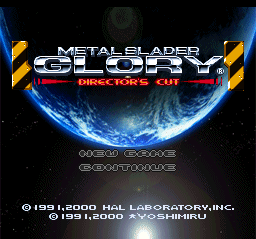 | Metal Slader Glory: Director's Cut: The absolute last licensed Super Famicom game is actually a remaster: Metal Slader Glory was an adventure game developed by HAL Labs (the Kirby guys) and first released for the Famicom. Like Famicom Tantei Club II, which also saw a graphically remastered Super Famicom version towards the end of the console's life, it's a traditional Japanese graphic adventure game, which largely relies on menu commands for movement and interaction. The story concerns the titular Metal Slader, a combat robot that the protagonist finds with a mysterious warning about the Earth being in danger. He takes his girlfriend and sister (thankfully different people) along in tow to uncover what the message might mean. |
And that's going to do it for this series of Wiki Projects. My thanks as always goes to everyone who has read, commented on and supported this quixotic endeavor, to the many hard-working wiki editors and archivists here and elsewhere who have been tracking down and filling out information on these games long before I started, to folks like @pepsiman and @hydao for helping me translate some titles that GameFAQs got wrong, and to anyone who finds this database useful in the future for inadvertently justifying the amount of effort required to make it happen. What started out as an idle way to spend time doing something "productive" while listening to the Bombcast and MBMBaM snowballed into this massive project entirely accidentally, but I feel a real sense of accomplishment from getting it done. I still have to check my master list again to ensure I didn't leave anyone out, and then there's all the Wii/Wii U/New 3DS Virtual Console SNES releases to add, but for a spell I'm going to take it easy on the wiki business while I figure out where I want to go next. The N64 seems like a natural candidate for a sequel...
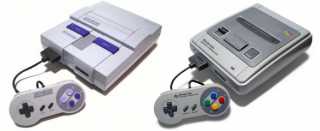
Log in to comment